You find out that a family member is a landscape architect. You immediately picture them on all fours, hands in the dirt, laying pavers. Or sitting at a desk, pencil in hand, sketching all day. But what does the job really entail?
Landscape architects are unique creatures that not many people understand outside their professional circle. Meeting one raises all sorts of questions. People try their best to imagine the secret lives of landscape architects, with mixed results.
“You’re a landscape architect? So can you help me revive my wilting tomato plant?”
A landscape architect is not the same as a landscaper or gardener — their job does not require working directly with their hands in the dirt. Rather, they specialize in creating outdoor spaces, which involves harnessing nature’s potential as a material. Above all, landscape architects question the role of vegetation in a given project. Beyond their respective botanical qualities, plants are selected and placed in order to meet practical or aesthetic needs — water management, shade, privacy, sound or visual filtration, easier maintenance, ambiance, etc.
Out of interest, passion, or training, some people have more in-depth botanical knowledge that they are happy to use in service of design. That being said, landscape architects don’t necessarily know the behaviour of each plant off the top of their head! What they all master are the principles of biodiversity and ecosystem creation that are key to developing enjoyable and functional living environments.
Canadian Society of Landscape Architects
“Landscape architects shape the world around us through analysis, planning, design, and management of the natural and built environment.”
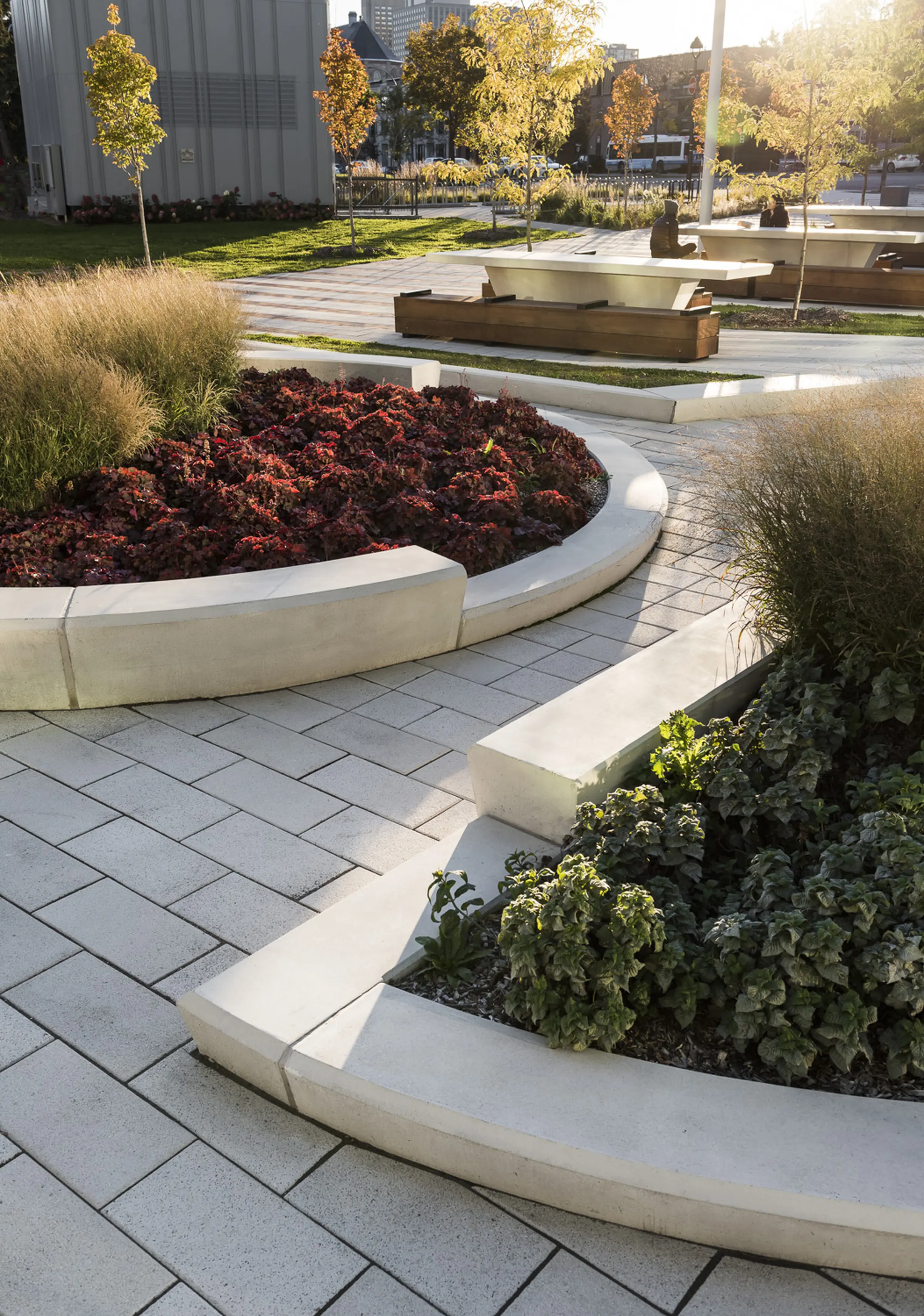
Maison de Radio-Canada ©Vincent Brillant
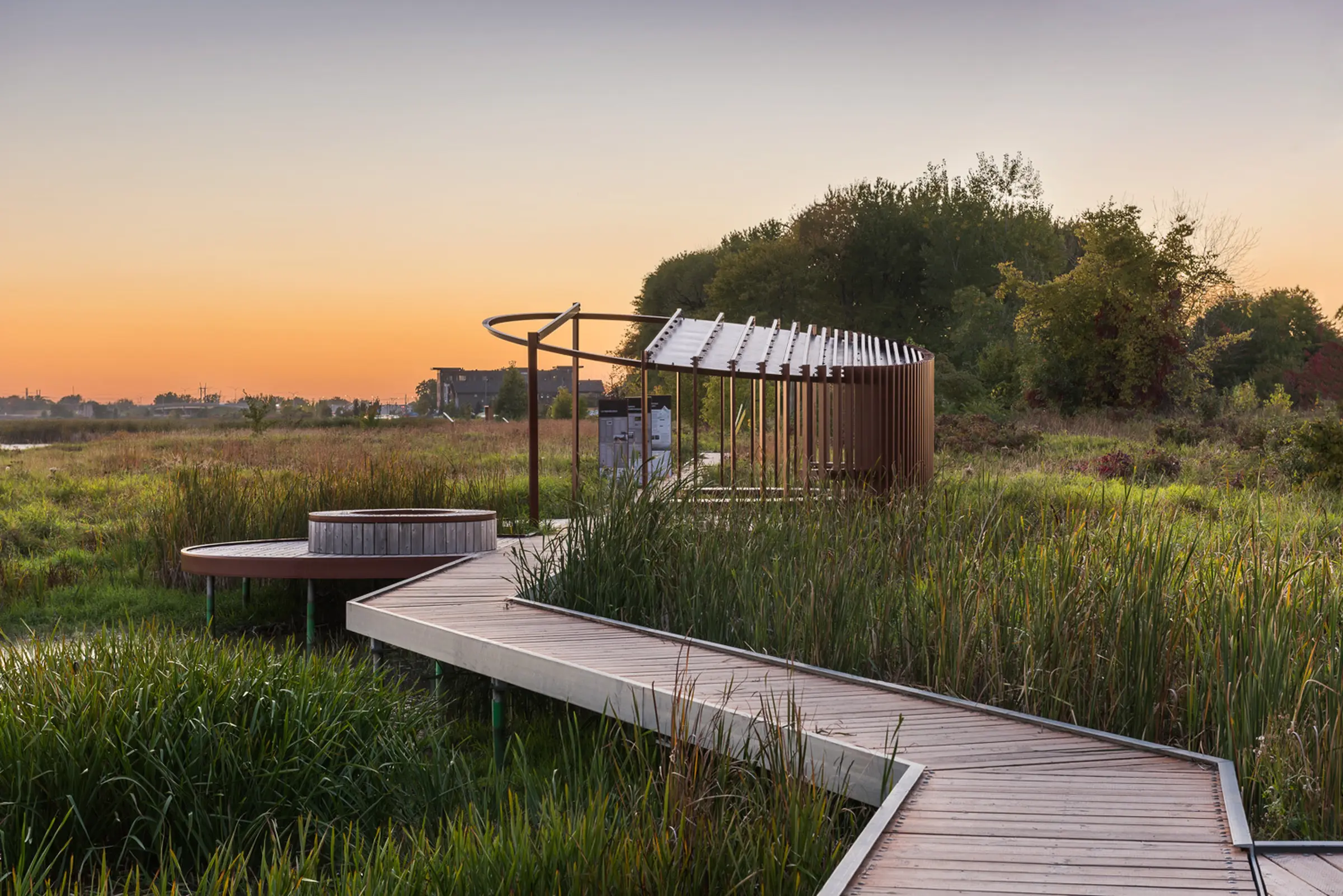
Ruisseau de Feu Conservation Park ©Vincent Brillant
Landscape architects design outdoor settings of all types: public squares, parks, school yards, pathways, spas, hospital grounds, resorts, residential courtyards, and more. Their field of expertise is vast and plants meet a range of needs, whether they are already there or introduced to the site.
For example, in Rosemont Park, it was a matter of conserving as many mature trees as possible and adding species to bolster the neighbourhood’s climate resiliency. A microforest provides citizens with shady areas. Visitors play catch in the clover glade. Diverse flora throughout ensures a harmonious sequence of colour and textures over the seasons.
For the Jardin d’Atholstan, in downtown Montréal, the goals were different. This space is named for an influential Montréal journalist and businessman who founded The Montréal Star. Low-profile greenery complements a subdued aesthetic and artistic sensibility that aligns with the project’s heritage value. The beautiful blooms of a shade-loving serviceberry shrub enhance the space.
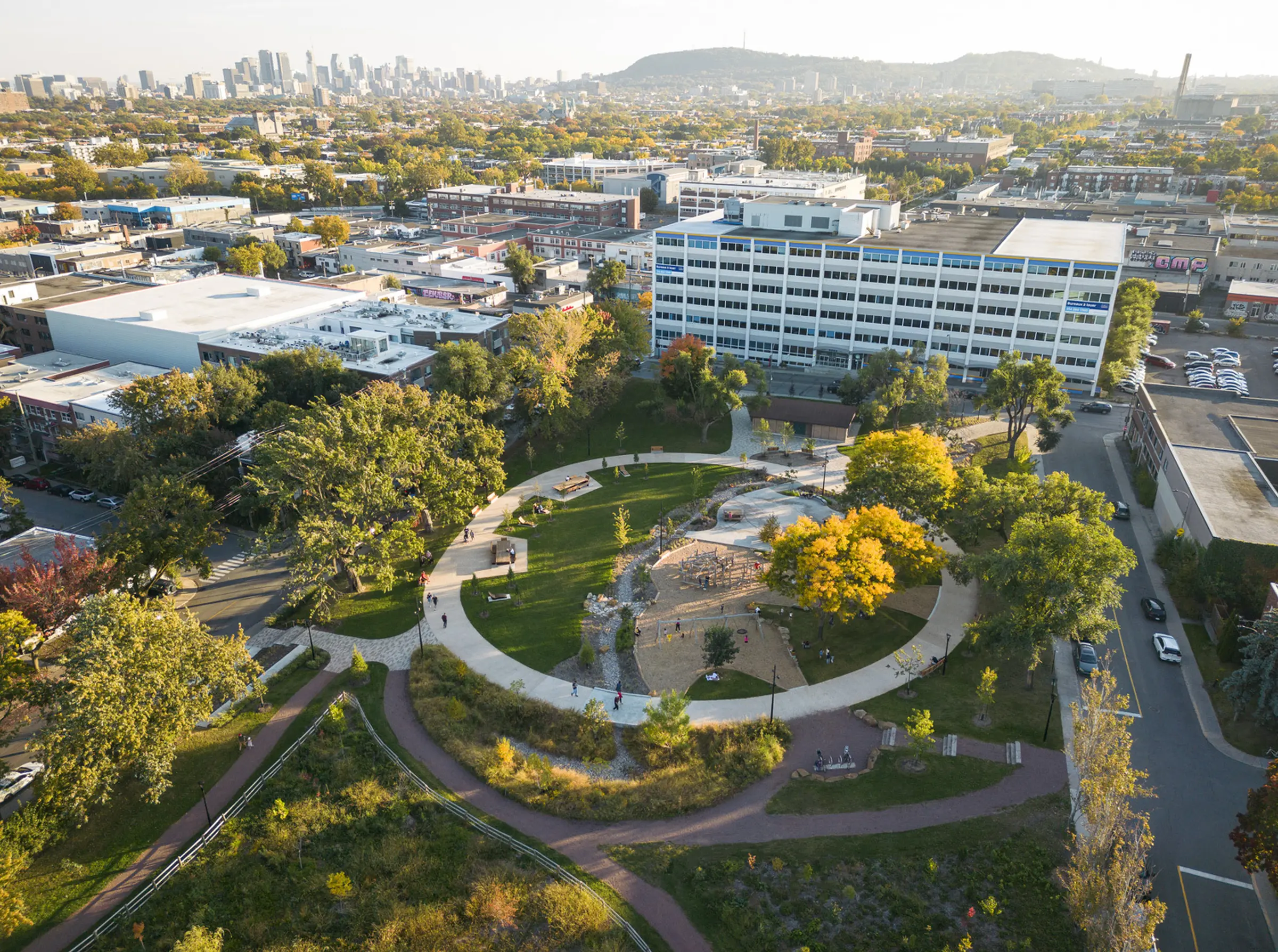
Parc Rosemont ©Vincent Brillant
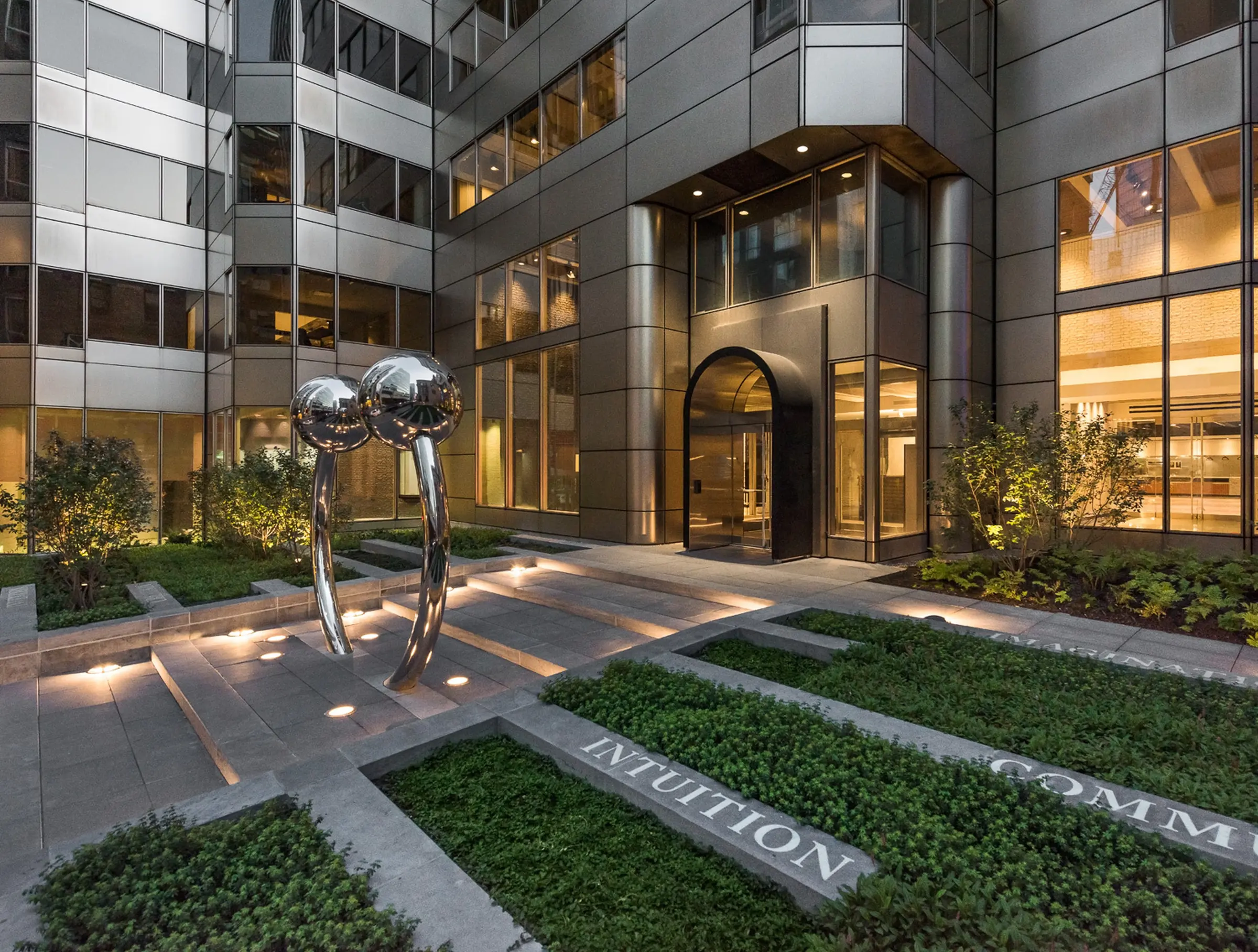
Jardin d'Atholstan ©Vincent Brillant
Whatever the mandate, nature is part of the landscape architect’s considerations, with the goal of promoting the well-being of communities based on the environment’s constraints and qualities.
Our vegetation experts contribute their knowledge to the team’s collective thinking, providing a unique and specific perspective that elevates the potential of projects. This singular view is greatly appreciated around the table.
“You’re a landscape architect? So you can help me lay pavers around my pool?”
Ah, here you’re confusing landscape architects with the people who bring their vision to life on the ground. It’s an understandable mix up.
Choosing a type of paver and how it is laid out are some of the decisions made by a landscape design specialist. The selection is informed by the paver’s colour, texture, composition, degree of permeability and more. These parameters must be suitable for the desired look and function, like the need to have an easy-to-maintain surface, the ability to withstand certain loads, or the likelihood of reducing the impact of heat islands. Laying these pavers, more specifically, is done by the general contractor to whom the baton is passed.
In reality, landscape architects provide upstream consideration of all the issues involved in promoting an optimal experience of the premises. These include access to the site, circulation flows, maintenance, ambiance, runoff water management, levelling, heritage integration, to name a few. All these aspects are considered when planning the project, perfected in collaboration with the other trades, including architects, engineers, and contractors.
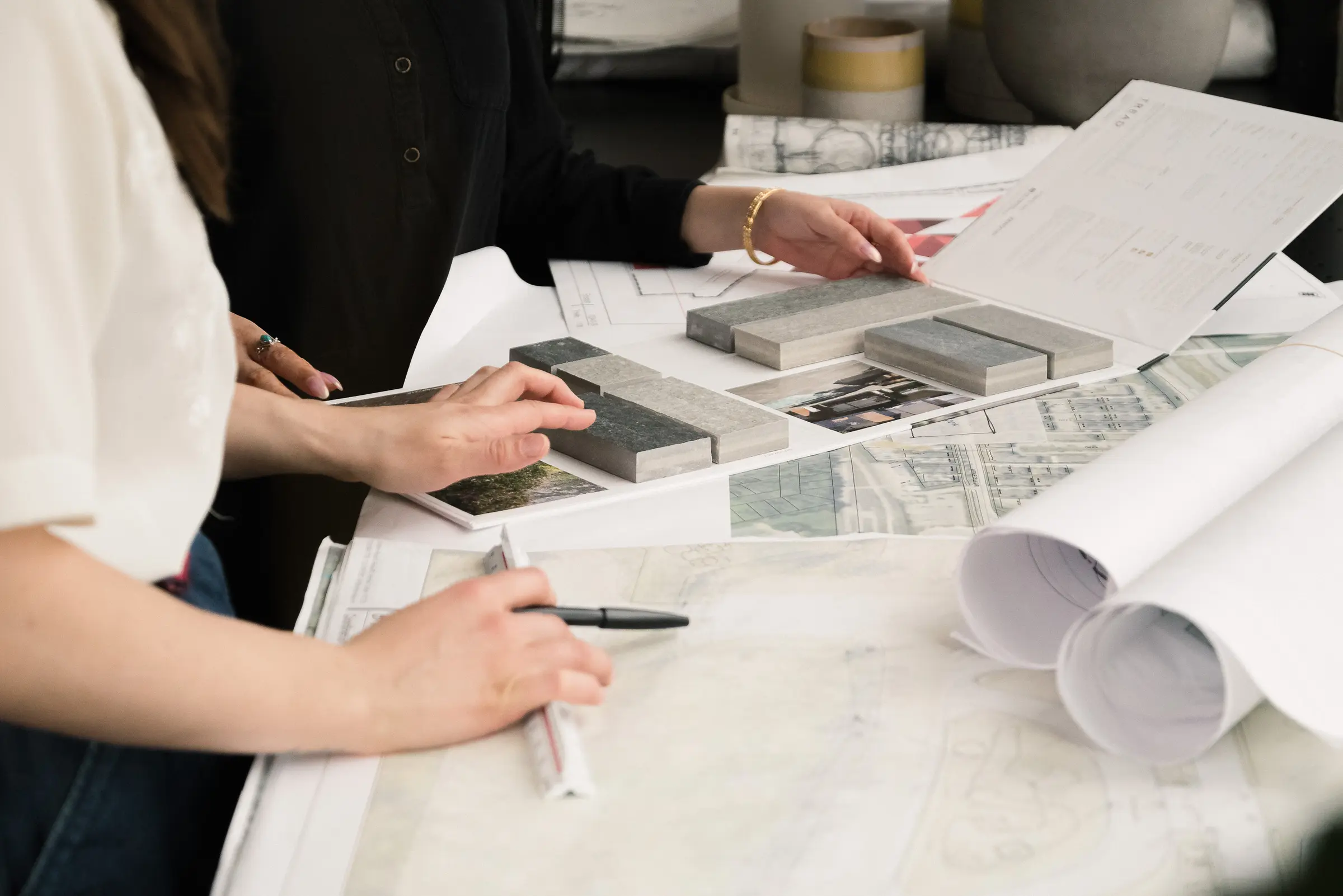
©Élizabeth Gartside
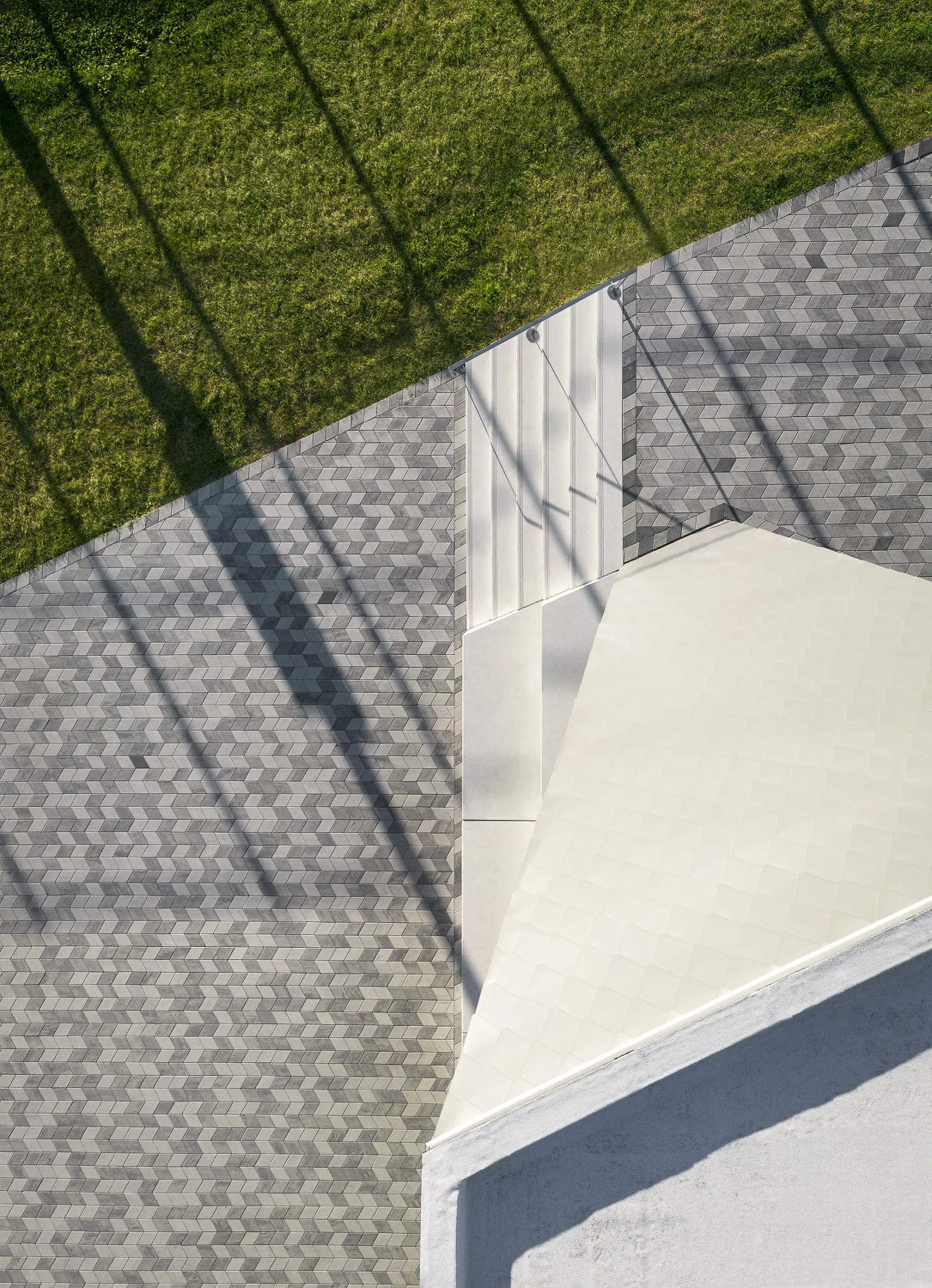
Parc Philippe-Villeneuve ©Vincent Brillant
“You’re a landscape architect? So you clear snow in the winter?”
Actually, no. Landscape architects generally stick to the same tasks in summer and winter. They have enough work to keep them busy year-round! The office is their primary workspace, broken up by visits to construction sites in the milder seasons.
They bounce between different tasks in their daily work to complete the three major stages of each project.
- Design. The vision of the site materializes in this phase. With their colleagues, landscape architects imagine a welcoming, practical, beautiful, and unique space. Ideas come together and a sketch takes shape. A concept emerges. Everything is finalized in 3D to validate the scale, spaces, views, colours, textures, and volumetry to present to the client.
- Plans and bids. In this stage, landscape architects find specific ways to make their vision a reality. Materials, dimensions, and furniture, to name just a few, are now selected with suppliers. The choices must respond to logistical — like the clearance necessary to remove snow from pedestrian access to a building — and financial constraints of the mandate. Decisions are made in light of discussions with other professionals such as architects and engineers.
- Overseeing the site. The plans are finally becoming a reality! Landscape architects go to the site to ensure that everything is unfolding smoothly and corresponds to the vision. If unforeseen events or technical constraints arise, they go into problem-solving mode and all changes are communicated to the people involved. The goal? To guarantee the quality, consistency, and viability of the site until it is finally complete.
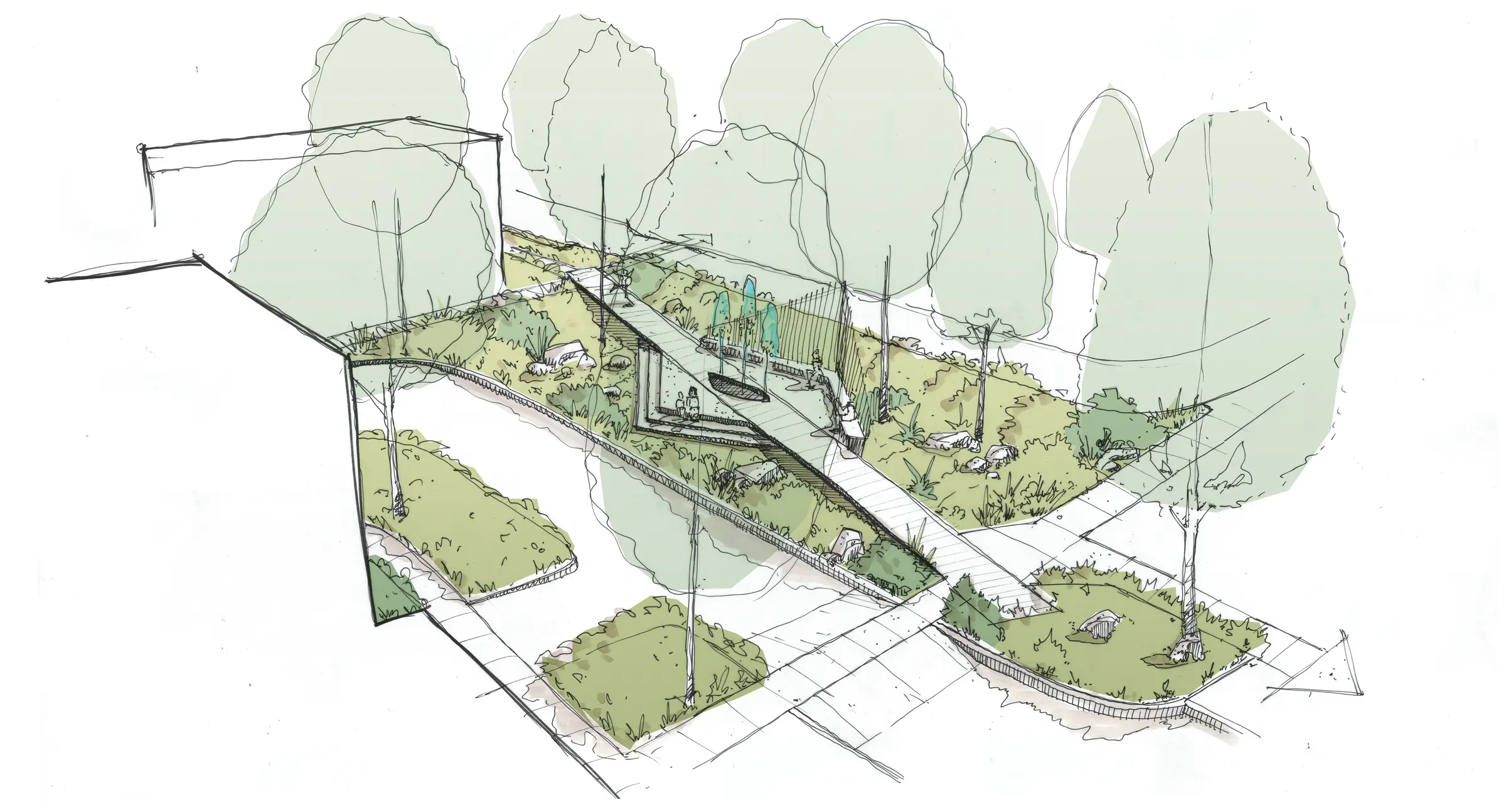
Concept sketch – Carré Augier ©André Gatien
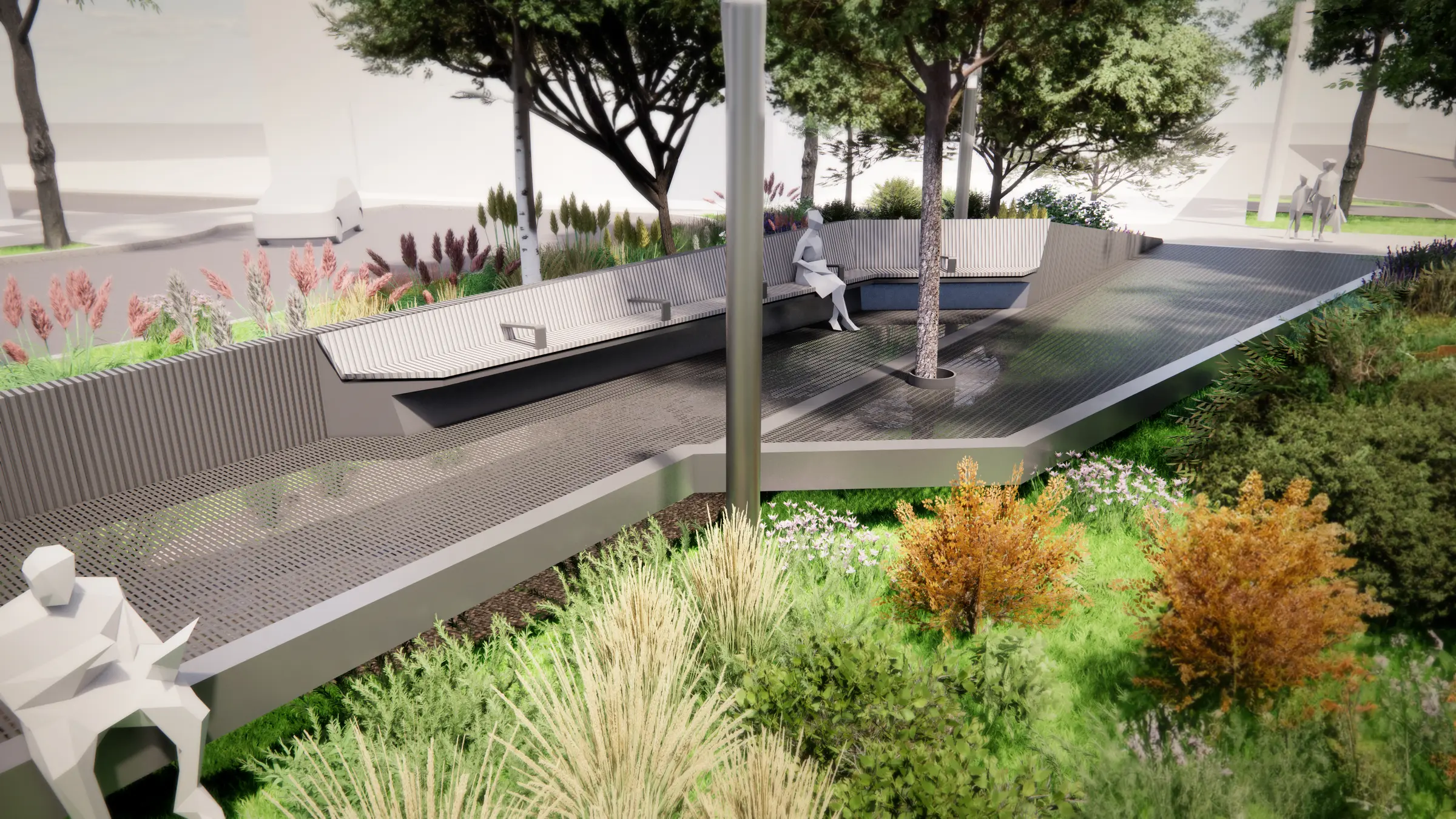
3D rendering – Carré Augier ©André Gatien and Iona Sobral
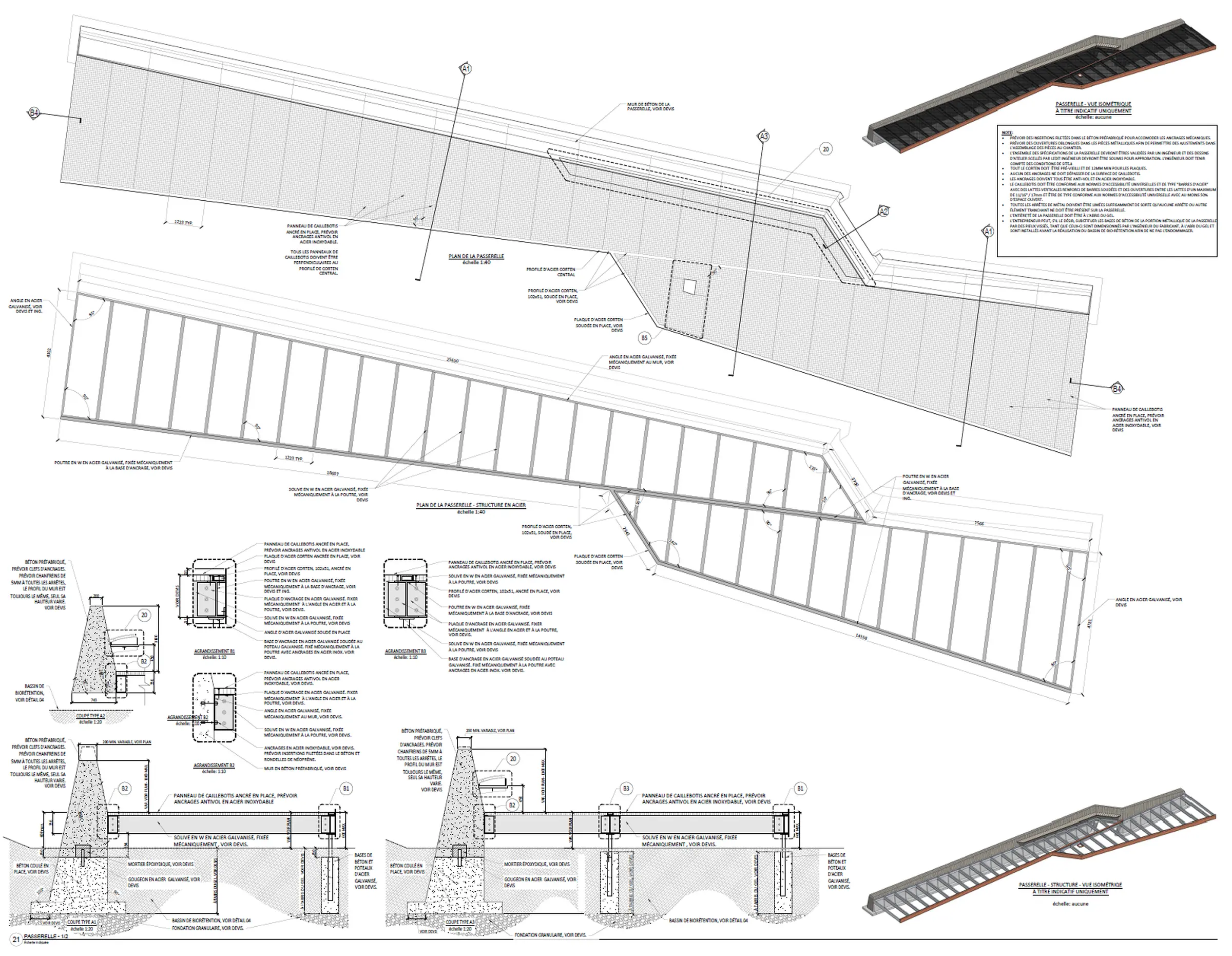
Construction details – Carré Augier ©André Gatien
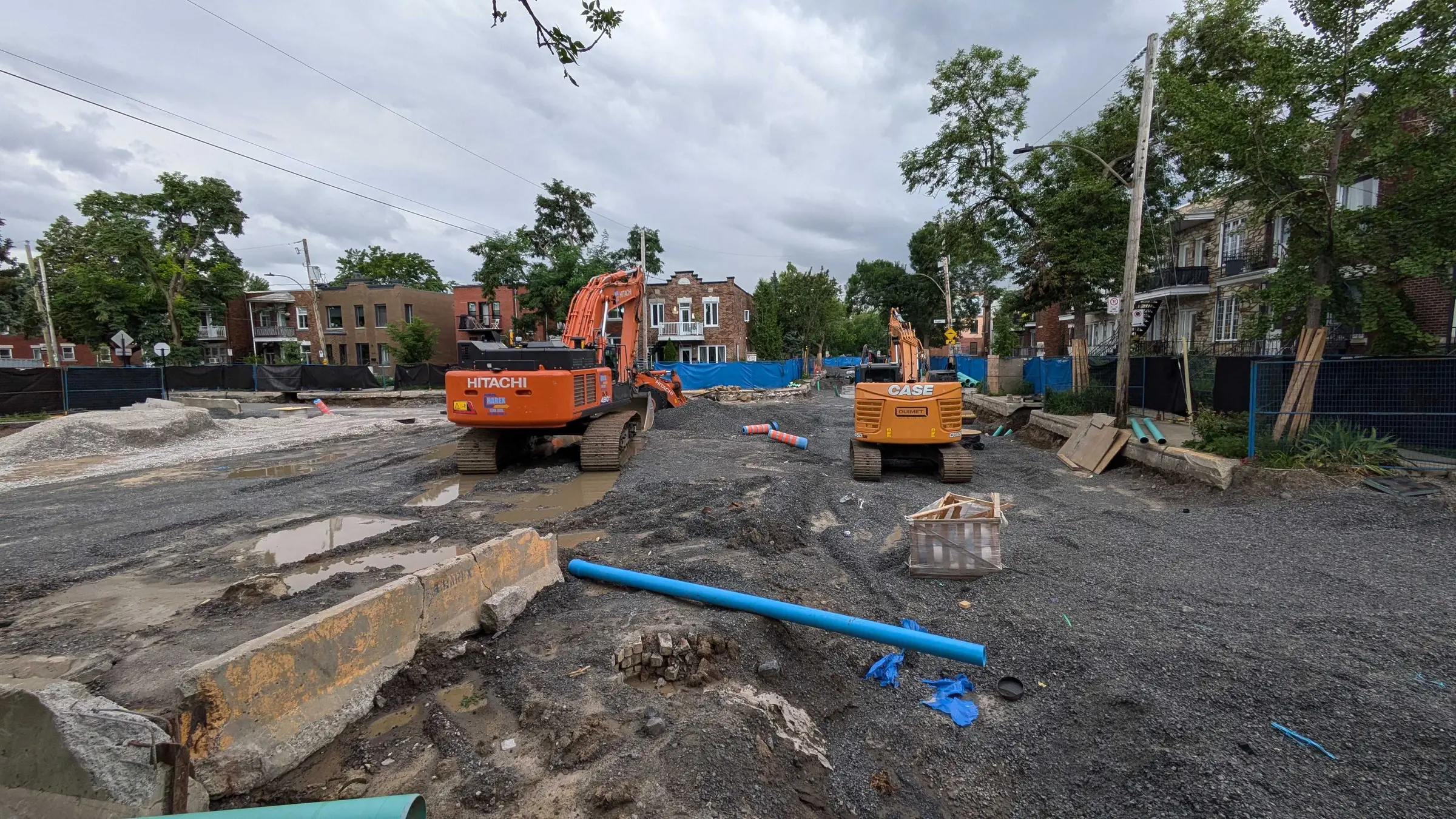
Site monitoring – Carré Augier
“You’re a landscape architect? So you spend your days drawing?”
Some days, yes, and we love it! Drawing is one of a landscape architect’s tasks, both on paper and on screen. But no two days are the same. There is a large creative component to the job, manifested through sketches, of course, but also problem solving, coordination, budget management, and more. Persuading others (real estate developer, government body, etc.) of a vision requires a mix of visuals, calculations, and well-chosen words.
All this to say, landscape architects are highly versatile professionals with a wide range of skills. For anyone hearing about this field for the first time, the crossover between architecture and landscape seems surprising! And yet the traces of their work are everywhere, without us even realizing it. We instinctively stroll down a flower-lined path that adds beauty to our trip to the library. We sit on a park bench strategically placed in the shade to watch our children explore the dry river that handles heavy rains. We hang our towel on a hook before slipping into a hot tub oriented to showcase the view and placed to offer intimate areas. We stretch out comfortably at the edge of the complex’s pool to soak up the sun on custom-made furniture.
You just have to get to know landscape architects to realize that they are meticulous and creative people who bring function and beauty to everyday life! We couldn’t do it without them. The secret lives of landscape architects aren’t really so secret after all, they are right there in plain sight every day.
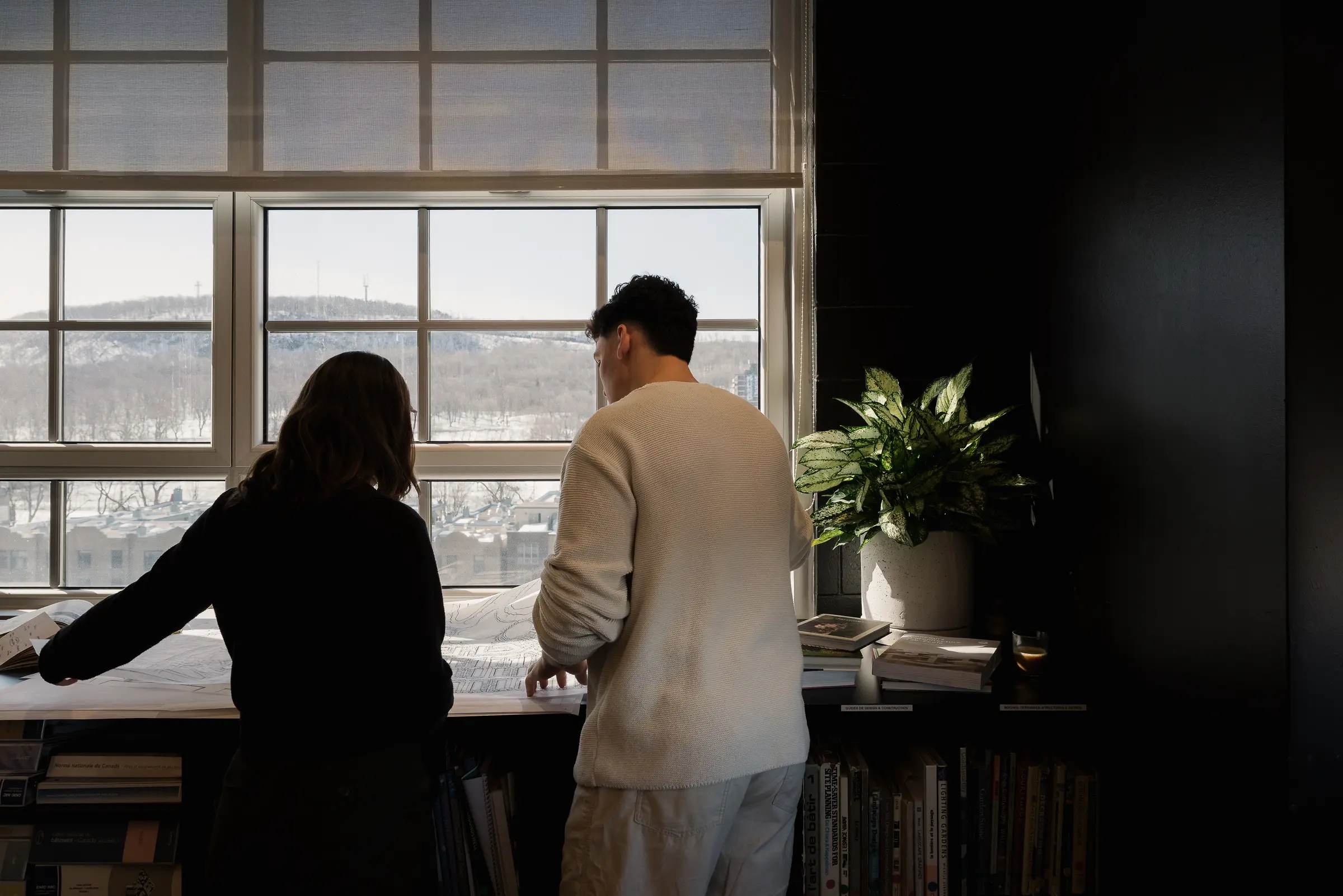
©Élizabeth Gartside
Share the article
Recommended reading
To learn how Projet Paysage has evolved over the years, read our story.
